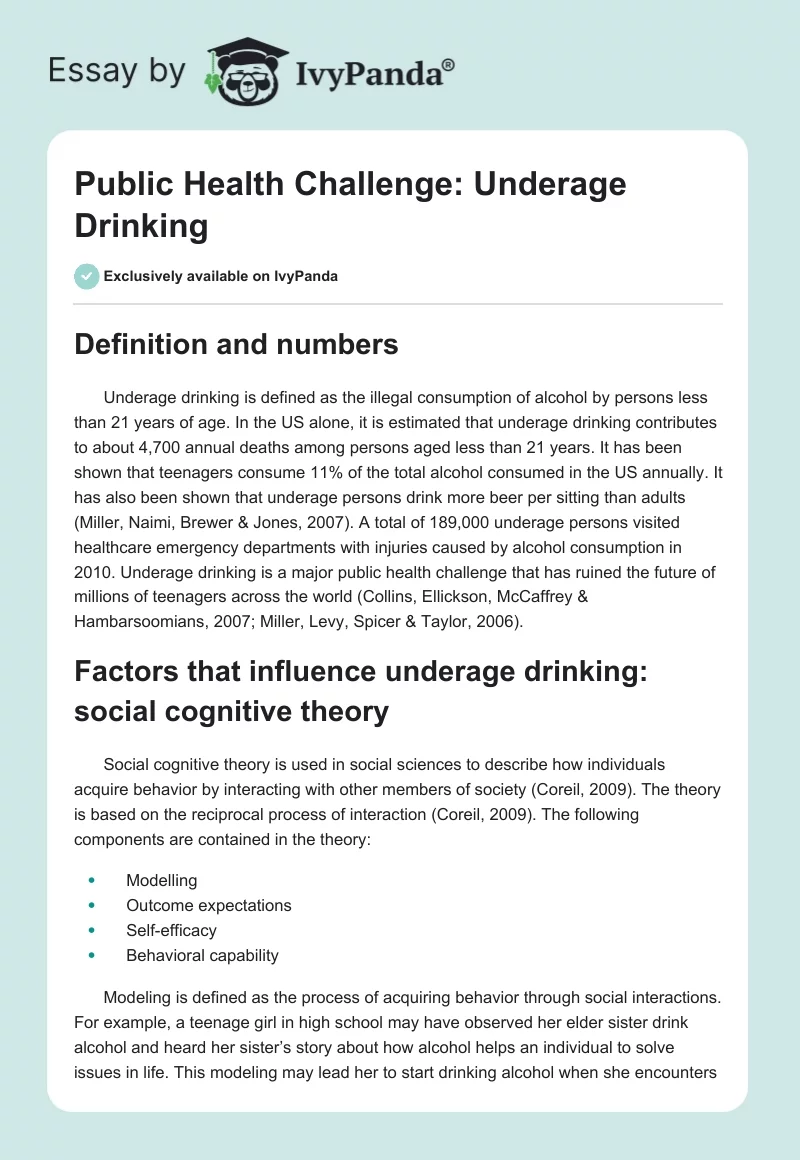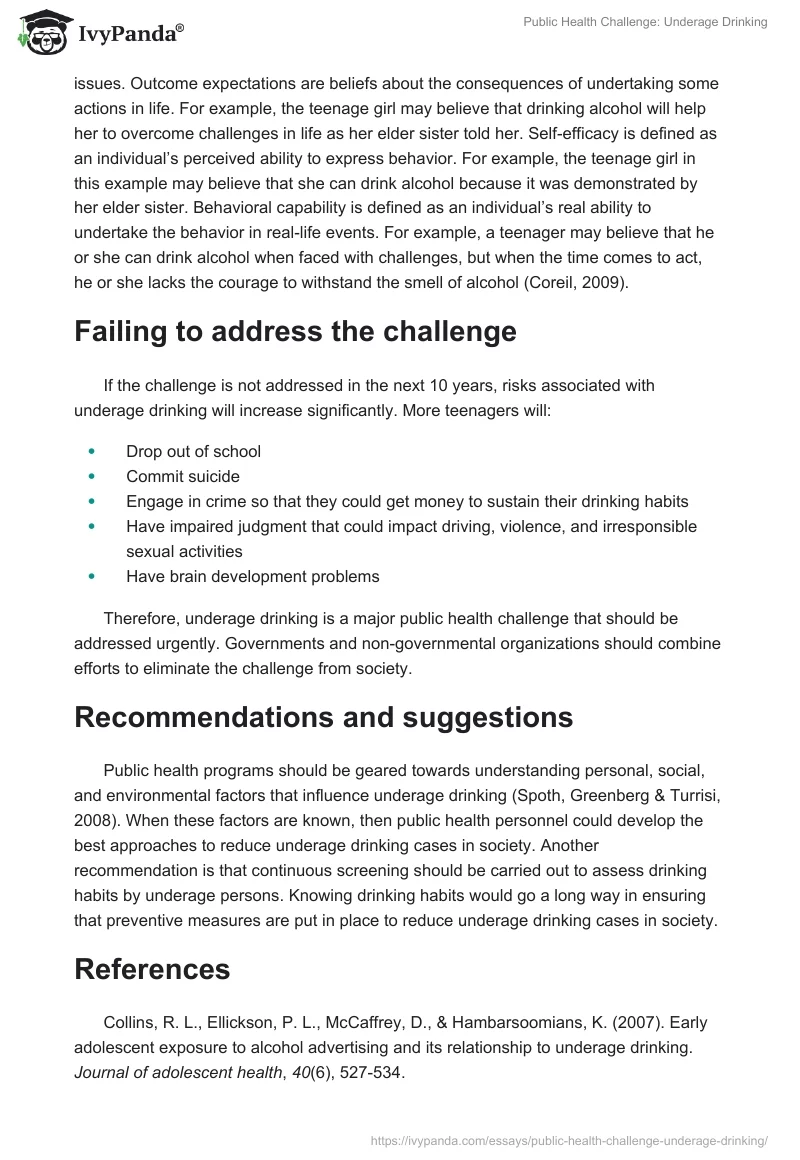Definition and numbers
Underage drinking is defined as the illegal consumption of alcohol by persons less than 21 years of age. In the US alone, it is estimated that underage drinking contributes to about 4,700 annual deaths among persons aged less than 21 years. It has been shown that teenagers consume 11% of the total alcohol consumed in the US annually. It has also been shown that underage persons drink more beer per sitting than adults (Miller, Naimi, Brewer & Jones, 2007). A total of 189,000 underage persons visited healthcare emergency departments with injuries caused by alcohol consumption in 2010. Underage drinking is a major public health challenge that has ruined the future of millions of teenagers across the world (Collins, Ellickson, McCaffrey & Hambarsoomians, 2007; Miller, Levy, Spicer & Taylor, 2006).
Factors that influence underage drinking: social cognitive theory
Social cognitive theory is used in social sciences to describe how individuals acquire behavior by interacting with other members of society (Coreil, 2009). The theory is based on the reciprocal process of interaction (Coreil, 2009). The following components are contained in the theory:
- Modelling
- Outcome expectations
- Self-efficacy
- Behavioral capability
Modeling is defined as the process of acquiring behavior through social interactions. For example, a teenage girl in high school may have observed her elder sister drink alcohol and heard her sister’s story about how alcohol helps an individual to solve issues in life. This modeling may lead her to start drinking alcohol when she encounters issues. Outcome expectations are beliefs about the consequences of undertaking some actions in life. For example, the teenage girl may believe that drinking alcohol will help her to overcome challenges in life as her elder sister told her. Self-efficacy is defined as an individual’s perceived ability to express behavior. For example, the teenage girl in this example may believe that she can drink alcohol because it was demonstrated by her elder sister. Behavioral capability is defined as an individual’s real ability to undertake the behavior in real-life events. For example, a teenager may believe that he or she can drink alcohol when faced with challenges, but when the time comes to act, he or she lacks the courage to withstand the smell of alcohol (Coreil, 2009).
Failing to address the challenge
If the challenge is not addressed in the next 10 years, risks associated with underage drinking will increase significantly. More teenagers will:
- Drop out of school
- Commit suicide
- Engage in crime so that they could get money to sustain their drinking habits
- Have impaired judgment that could impact driving, violence, and irresponsible sexual activities
- Have brain development problems
Therefore, underage drinking is a major public health challenge that should be addressed urgently. Governments and non-governmental organizations should combine efforts to eliminate the challenge from society.
Recommendations and suggestions
Public health programs should be geared towards understanding personal, social, and environmental factors that influence underage drinking (Spoth, Greenberg & Turrisi, 2008). When these factors are known, then public health personnel could develop the best approaches to reduce underage drinking cases in society. Another recommendation is that continuous screening should be carried out to assess drinking habits by underage persons. Knowing drinking habits would go a long way in ensuring that preventive measures are put in place to reduce underage drinking cases in society.
References
Collins, R. L., Ellickson, P. L., McCaffrey, D., & Hambarsoomians, K. (2007). Early adolescent exposure to alcohol advertising and its relationship to underage drinking. Journal of adolescent health, 40(6), 527-534.
Coreil, J. (Ed.). (2009). Social and behavioral foundations of public health. Sage Publications Ltd.
Miller, J. W., Naimi, T. S., Brewer, R. D., & Jones, S. E. (2007). Binge drinking and associated health risk behaviors among high school students. Pediatrics, 119(1), 76-85.
Miller, T. R., Levy, D. T., Spicer, R. S., & Taylor, D. M. (2006). Societal costs of underage drinking. Journal of Studies on Alcohol and Drugs, 67(4), 519.
Spoth, R., Greenberg, M., & Turrisi, R. (2008). Preventive interventions addressing underage drinking: state of the evidence and steps toward public health impact. Pediatrics, 121(Supplement 4), S311-S336.


